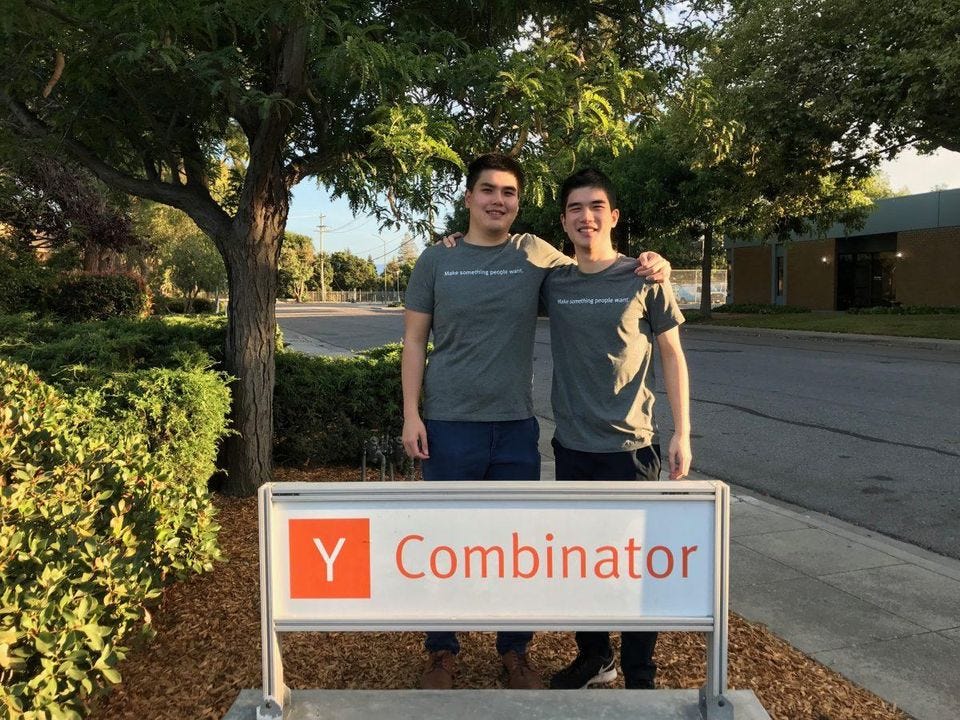Waves's Emerson and Morris Hsieh Discuss Best Practices On Incorporating User Feedback
These two Y Combinator (S19) founders talk about their best practices on gaining and incorporating customer feedback into their product.
Author’s Note: Please share the newsletter! The more people subscribe, the better the newsletter gets!
Executive Summary:
Be persistent in getting user feedback as often as possible. Building a habit of being proactive in getting user feedback is essential to building something that people want.
Ask “problem-focused” instead of “what would you want” questions. Asking the former type of questions allows a user to go into detail with what their issues are, rather than pitching them a solution that they will naturally say “yes” to because it ostensibly fixes their problems.
Create a method for users to submit feedback to you via your product or service. By creating a channel for user feedback, you can get feedback in real-time and thus tailor your efforts to quickly fix any issues that pop up. In addition, you help give the user agency to actively help to shape the final form of the product, leading them to be loyal users in the years to come.
Standout Quotes:
“I try to ask questions that describe our users' problems on/off the app and to find insight that way.”
The question that we ask for this is always, "is there anything that you'd like fixed?"
Founders are constantly working to improve their new product or service for their users. Getting great user feedback and successfully incorporating it into their iteration process is essential to establishing true product-market fit. Emerson and Morris Hsieh, cofounders (and brothers) of Waves, the dating app that allows you to connect based on sexual preferences, have some insights to share on how to properly ask questions and leverage user feedback to build a better product.

Waves cofounders Morris (left) and Emerson (right). HSIEH BROTHERS
Daso: Did you guys struggle to initially incorporate feedback when you were turning customer discovery into early versions of Waves?
Emerson and Morris: Early feedback was great, and I was lucky to have much feedback coming in due to how "interesting" the idea was too many. The feedback that we got was pretty consistent, though, so it wasn't hard to incorporate the input into what our features ended up being. (We were also really candid with asking for advice on what to have, so we got clear answers).
Daso: How did you ask your users questions in such a way to avoid biasing their answer, given sex and its related topics are such a taboo to be discussed openly?
Emerson and Morris: Later on with building the product, I found that we weren't too adept at removing biases from questions. It was less about the sense of sex being a taboo topic and more in user behavior. As an illustration, the most broadcasted question was, "would you like to find someone with the same fetish as you through an app?" for our user validation. We later learned that the overwhelming positivity was that the answer would always obviously be a "yes," akin to "asking someone if they'd like to make more money." We've only learned this retrospectively by reading "The Mom Test" (as recommended by our YC partners) and realizing our past errors. Based on that, in our current conversations, I try to ask questions that describe our users' problems on/off the app and to find insight that way.
Daso: What were some of the ways that you intentionally designed the app to shape user behavior to facilitate ideal interactions?
Emerson and Morris: I think the critical thing is that each user still has the option to show their sexual preferences/tastes to their matches. This helps with those who may be hesitant to show them in a more public space (before users match) despite wanting to find compatible partners.
Daso: Can you give me an example of how you would ask a question to discover what issues that users have on your app? What would you recommend for founders in how they should go about asking questions to better their users' experience?
Emerson and Morris: We either watch them use it (don't have the opportunity to do that too often, unfortunately) and fix where the problems were. Alternatively, we sample it from a close group of users and log their complaints. The question that we ask for this is always, "is there anything that you'd like fixed?". Our app is perpetually in development, so there are still these things that users want for quality of life improvement. Many of them coincide with our roadmap, so they can be candid about these asks (like one time about having a red dot on the list of conversations so they'd know what's new and what's not).
If you enjoyed this article, feel free to check out my other work on LinkedIn and my personal website, frederickdaso.com. Follow me on Twitter @fredsoda, on Medium @fredsoda, and on Instagram @fred_soda.
Previous F2F Q&A articles:
Convictional’s Chris Grouchy and Roger Kirkness Discuss How To Fundraise Properly
Deepbench's Yishi Zuo Has Raised 1M+ From Angel Investors. Learn How He Did It
Landis's Cyril Berdugo and Tom Petit Discuss Selecting The Right Investors For Your Startup
Latest Forbes Article: Fireflies.ai, An MIT And Penn Voice Transcription Startup, Raises $5M From Canaan Partners To Automatically Take Meeting Notes



